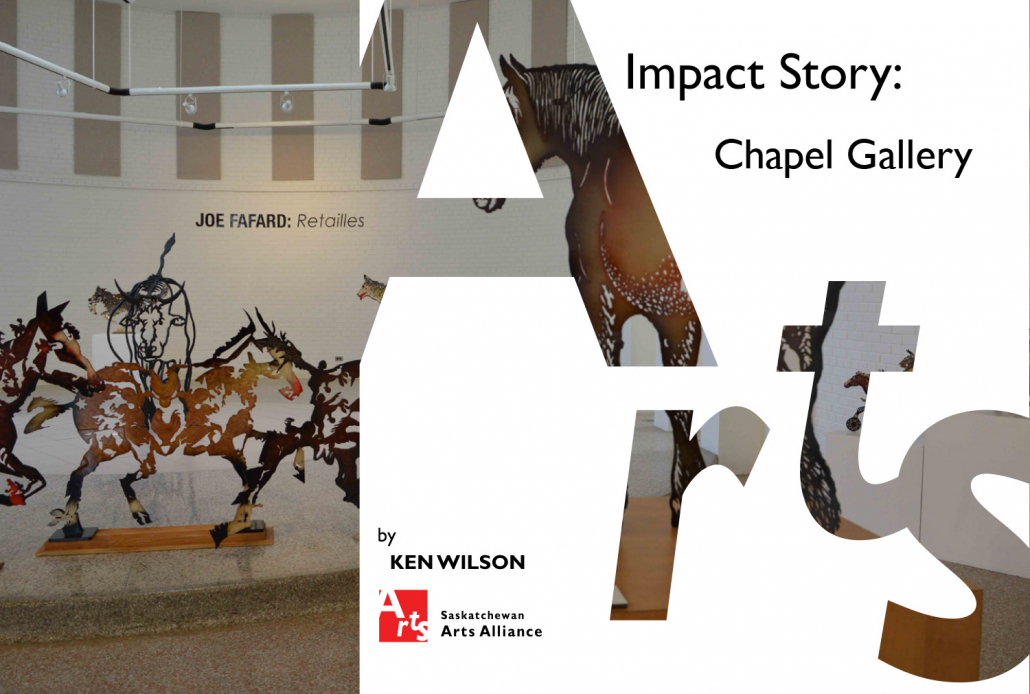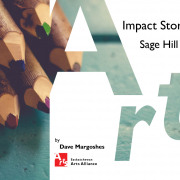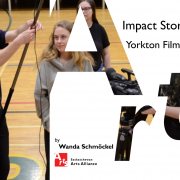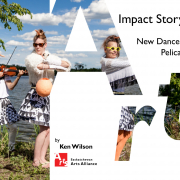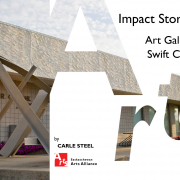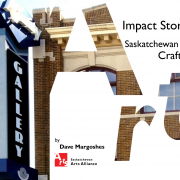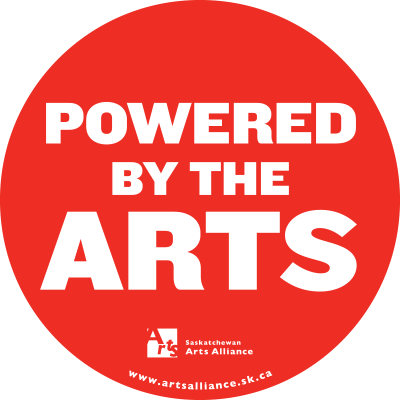Art Works – Chapel Gallery
SAA Art Works – February 2018
In November 2017 SAA launched a monthly Art Works series highlighting an arts organization making a positive impact in its community. For February 2018, SAA features the Chapel Gallery of North Battleford. In addition to exhibitions, the gallery facilitates workshops and mentorship programs.
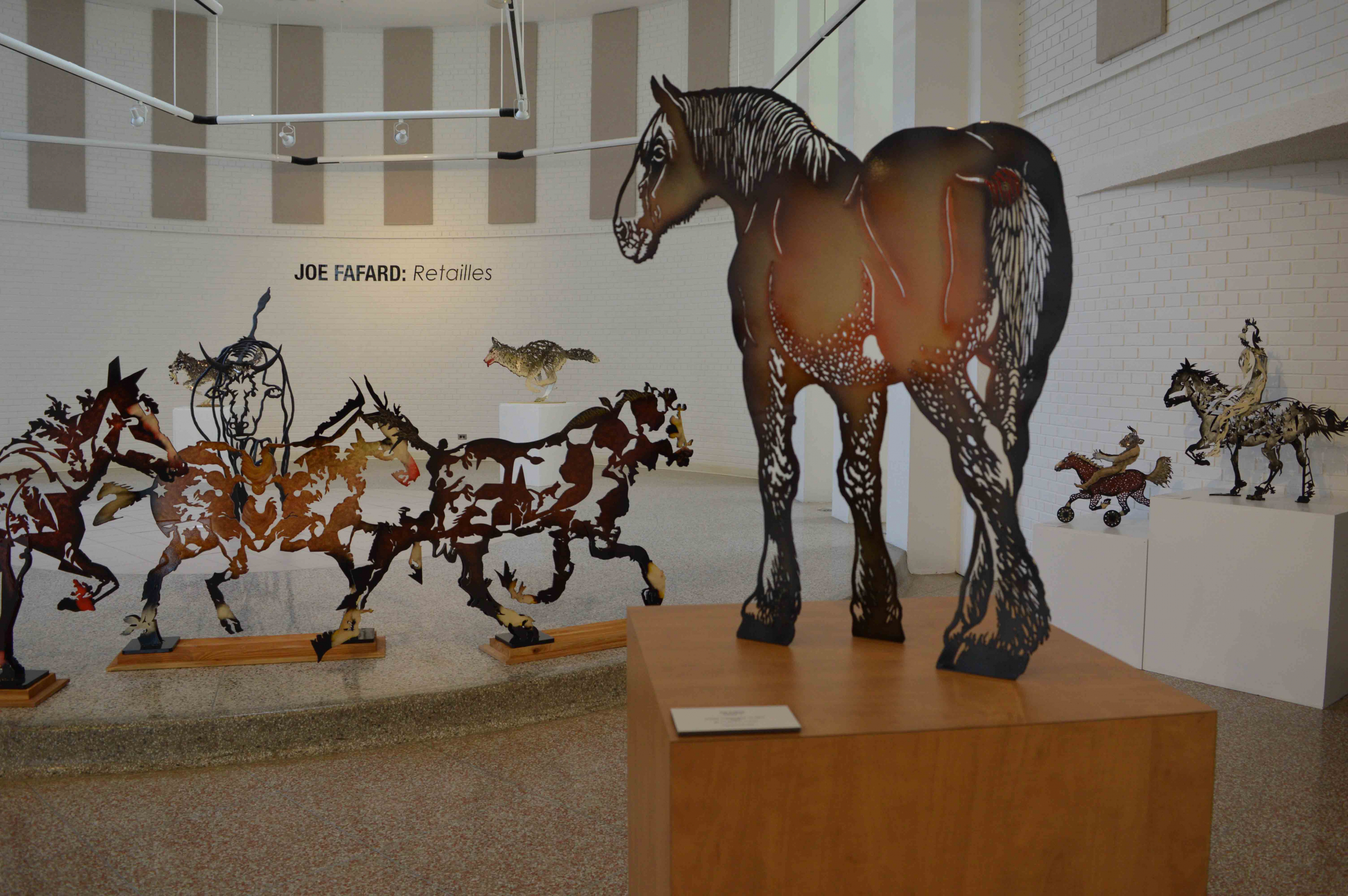
French for ‘scraps’, Joe Fafard’s Retailles is a collection of laser-cut and welded metal sculptures, along with embossed and woodcut prints. Fafard is one of Canada’s most recognized and prolific artists, whether in sculpture, drawing, or printmaking, Fafard’s work reveals his rural roots. The Chapel staff is understandably excited to present this exhibit by the internationally renowned artist, but it is not the first exhibit to bring the gallery a lot of attention. In September 2017, Ken Wilson, visited the Chapel Gallery, spoke with Leah Garven, the Curator/Manager of Galleries for the City of North Battleford, and wrote the following article.
When asked about a project she has been involved with that has had a powerful impact in her community, Leah Garven does not hesitate. “Walking with our Sisters”, she says. “It had a big impact in a divided community.”
Garven oversees the Chapel Gallery, a contemporary art gallery, and the Allen Sapp Gallery, which is devoted to the work of the Cree painter Allen Sapp. The Walking with our Sisters show was held at the Chapel Gallery in early 2016, but preparing for the exhibition drew upon the resources of both galleries. “WWOS was initiated by Metis artist Christi Belcourt”, Garven explains. Frustrated with the number of missing and murdered indigenous women in Canada, Belcourt turned to art to address the issue. He called on artist friends to make moccasin vamps in memory of those women. (A ‘vamp’ is an upper part of a shoe and specifically in this case, a piece of fabric, often beaded, looking like the upper part of a moccasin.) The initial goal was 750 vamps, but the response to Belcourt’s call was overwhelming,” Garven says. “She eventually ended up with 2,200 vamps and she had to stop accepting them.” A national team of cultural leaders formed and began working with Belcourt. The project, Garven describes it as a memorial rather than an art exhibition, started travelling across Canada.
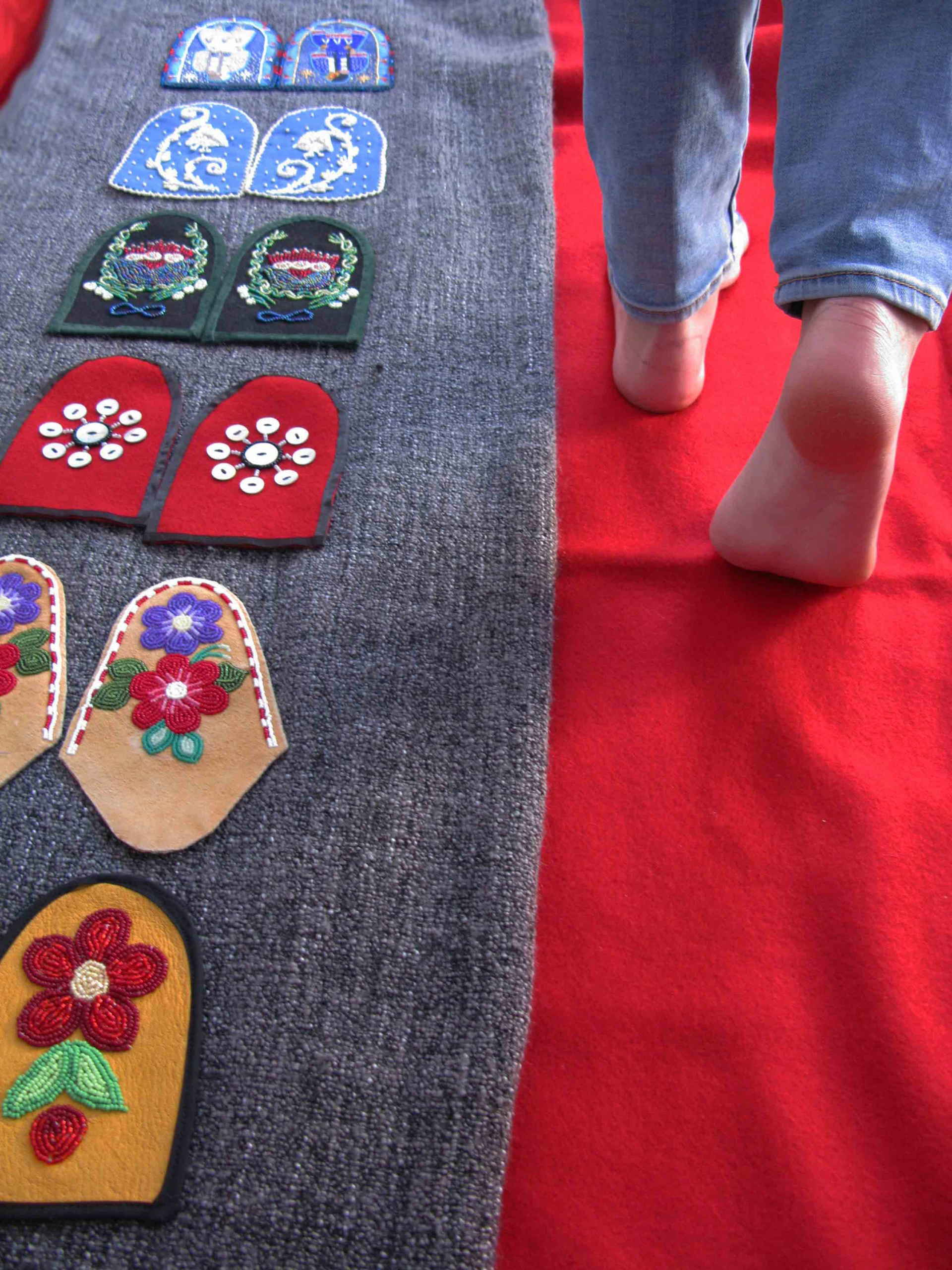
But Walking with our Sisters isn’t just an art show, Garven points out. “The WWOS” memorial requires at least a year of planning and community engagement before the ceremonial bundle arrives”, she notes. First a series of community conversations was held in North Battleford, meetings which were open to the public. The meetings began with smudging and prayers by First Nations elders. “The meetings brought together people from different walks of life, she recalls, “particularly Indigenous and non-Indigenous people.” Garven got to know many Indigenous women through this experience and she was shocked at how many had more than one family member among the missing.
As these community conversations progressed plans for a variety of activities, including a parade, began to form. “I didn’t want to do the parade, but the community knew how to reach their audience and in the end it was one of the best moments”, Garven recalls. “In a way, that was the lesson of the whole project: the importance of allowing the community to take the lead, and of trusting the prayers of the elders for success.” There were also more social gatherings, where women did beading and made ribbon skirts, and fundraising events. There were feasts and spiritual ceremonies, which created cultural awareness for the settlers in the group. All of this activity brought First Nations people and settlers together. “Friendships formed and networks expanded”, Garven recalls. “I got to know people working in other organizations and that led to collaborations with those organizations.”
When the memorial opened, 150 people turned up for a pipe ceremony, which was followed by a feast and a round dance which another 750 people attended. “We had 900 people and 70 volunteers in the gallery that day”, Garven remembers. “It was incredible.” The memorial was in the Chapel Gallery for three weeks and more than 4,000 people came to see it – an astonishing number for a small gallery in a city of 14,000 people. Businesses sent their employees as a cultural awareness experience, while others gave their staff time off to volunteer, and 38 different school groups, comprising 750 children, visited. However, for Garven the biggest legacy of the show was the people worked together to make it happen. “People from all walks of life worked together in a spirt of humanity”, she says. “And that’s had a lasting effect on this community.”
The Chapel Gallery is located at 891 99th Street in North Battleford. For more information go to www.chapelgallery.ca.
